
197 posts
- . Upside-down Jellyfish - Cassiopeia Andromeda.
Перевернутая медуза-Кассиопея Андромеда. Upside-down jellyfish - Cassiopeia Andromeda.





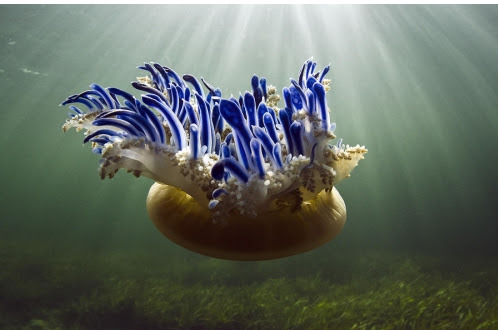








Кассиопея Андромеда – медуза средних размеров( максимальную ширину 30 см) в процессе эволюции перешедшая от свободноплавающего (пелагического) образа жизни к прикрепленному. Скопления Кассиопеи Андромеды можно видеть в теплых водах по всему миру, на мелководье, в защищенных от волн бухтах и лагунах, в мелких заводях и каналах,в мангровых болотах и других подобных местообитаниях. Неискушенные наблюдатели часто принимают этих медуз за актиний .
Эти красивые медузы переворачиваются кверху вниз и плывут на дно, прижимаются к нему желто-коричневый с белыми пятнами куполом и продолжают мягко пульсировать создавая восходящие токи воды. У Кассиопеи Андромеды ветвистые щупальца, иногда довольно яркой синей окраски, но чаще бледно-зеленые или светло-коричневые. Своими вытянутыми щупальцами медузы стараются выловить из потока пропускаемой через себя воды, что-нибудь съедобное . Кассиопея Андромеда питается – зоопланктоном, однако подобно другим кишечнополостным, в тканях они выращивают зооксантелл( симбиотическая водоросль), которым необходим солнечный свет. Эти водоросли поставляют свои излишки пищи медузам, которые ими питаются.
Стрекательными клетками эти медузы тоже не обделены и хоть и не сильно, но могут «ужалить» и человека. Кстати, стрекательные клетки Кассиопея выпускает в виде облачка полупрозрачной слизи, так что взбалтывать воду ластами при погружении рядом с этими медузами крайне не рекомендуется.
Cassiopeia Andromeda is a medium–sized jellyfish (maximum width 30 cm) that has evolved from a free-swimming (pelagic) lifestyle to an attached one. Clusters of Cassiopeia Andromeda can be seen in warm waters around the world, in shallow waters, in sheltered coves and lagoons, in shallow backwaters and channels, in mangrove swamps and other similar habitats. Inexperienced observers often mistake these jellyfish for anemones.
These beautiful jellyfish turn upside down and swim to the bottom, cling to it with a yellow-brown dome with white spots and continue to gently pulsate creating ascending currents of water. Cassiopeia Andromeda has branched tentacles, sometimes quite bright blue in color, but more often pale green or light brown. With their outstretched tentacles, the jellyfish try to catch something edible from the stream of water flowing through them. Cassiopeia Andromeda feeds on zooplankton, but like other coelenterates, they grow zooxanthellae (symbiotic algae) in their tissues, which need sunlight. These algae supply their surplus food to the jellyfish that feed on them.
These jellyfish are also not deprived of stinging cells, and although not much, they can "sting" a person. By the way, Cassiopeia releases stinging cells in the form of a cloud of translucent mucus, so it is highly discouraged to shake the water with flippers when diving next to these jellyfish.
Источник:https://www.youtube.com/watchv=4S9dT2nSYOg&ab_channel=vitaliy6447Kalutskyi,/www.projectnoah.org/spottings/17179815/fullscreen, /www.whatsthatfish.com/fish/upsidedown-jellyfish/2145#8, seaforum.aqualogo.ru/topic/54092-кассиопея-андромеда-cassiopea-androme%C2%ADda/, /rtraveler.ru/photo/337448/, /ok.ru/moychetv/topic/152205231908215, /ru.frwiki.wiki/wiki/Cassiopea, http://www.lensart.ru/picture-pid-6fb7f.htm, /lysmata-shop.ru/meduzyi/meduza-sidyachaya-kassiopeya-6-8-sm#prettyPhoto.
-
 johnmyhot liked this · 1 year ago
johnmyhot liked this · 1 year ago -
 aphid-kirby liked this · 1 year ago
aphid-kirby liked this · 1 year ago -
 low-level--00 reblogged this · 1 year ago
low-level--00 reblogged this · 1 year ago -
 low-level--00 liked this · 1 year ago
low-level--00 liked this · 1 year ago -
 fractal888 liked this · 1 year ago
fractal888 liked this · 1 year ago -
 bear-pattern-hamster liked this · 1 year ago
bear-pattern-hamster liked this · 1 year ago -
 imogen-fae liked this · 1 year ago
imogen-fae liked this · 1 year ago -
 emaadsidiki liked this · 1 year ago
emaadsidiki liked this · 1 year ago -
 craftycoffeechaos liked this · 1 year ago
craftycoffeechaos liked this · 1 year ago -
 anaftlxpt liked this · 1 year ago
anaftlxpt liked this · 1 year ago -
 famousinuniverse liked this · 1 year ago
famousinuniverse liked this · 1 year ago -
 buffetlicious liked this · 1 year ago
buffetlicious liked this · 1 year ago -
 elliethehauntedstarship reblogged this · 1 year ago
elliethehauntedstarship reblogged this · 1 year ago -
 manessha545 liked this · 1 year ago
manessha545 liked this · 1 year ago -
 txtokenman liked this · 1 year ago
txtokenman liked this · 1 year ago -
 rosaargentina liked this · 1 year ago
rosaargentina liked this · 1 year ago -
 the-replicant liked this · 1 year ago
the-replicant liked this · 1 year ago -
 public-light liked this · 1 year ago
public-light liked this · 1 year ago -
 charlie-mac-posts liked this · 1 year ago
charlie-mac-posts liked this · 1 year ago -
 viediaries liked this · 1 year ago
viediaries liked this · 1 year ago -
 xian2099 liked this · 1 year ago
xian2099 liked this · 1 year ago -
 seeker52 liked this · 1 year ago
seeker52 liked this · 1 year ago -
 prof-flytrap liked this · 1 year ago
prof-flytrap liked this · 1 year ago -
 massivedetectivekid liked this · 1 year ago
massivedetectivekid liked this · 1 year ago -
 frosty-orca liked this · 1 year ago
frosty-orca liked this · 1 year ago -
 a-random-brick liked this · 1 year ago
a-random-brick liked this · 1 year ago -
 shiroten reblogged this · 1 year ago
shiroten reblogged this · 1 year ago -
 shiroten liked this · 1 year ago
shiroten liked this · 1 year ago -
 luna3435 liked this · 1 year ago
luna3435 liked this · 1 year ago -
 joshua-adam liked this · 1 year ago
joshua-adam liked this · 1 year ago -
 dertaglichedan liked this · 1 year ago
dertaglichedan liked this · 1 year ago -
 yusuf-krk liked this · 1 year ago
yusuf-krk liked this · 1 year ago -
 karnalapple liked this · 1 year ago
karnalapple liked this · 1 year ago -
 benedictxavier reblogged this · 1 year ago
benedictxavier reblogged this · 1 year ago -
 nessieac liked this · 1 year ago
nessieac liked this · 1 year ago -
 vivencias-del-alma liked this · 1 year ago
vivencias-del-alma liked this · 1 year ago -
 gerda-p liked this · 1 year ago
gerda-p liked this · 1 year ago -
 bio-zurgy reblogged this · 1 year ago
bio-zurgy reblogged this · 1 year ago -
 zurgy liked this · 1 year ago
zurgy liked this · 1 year ago -
 gourmlessfool reblogged this · 1 year ago
gourmlessfool reblogged this · 1 year ago -
 su1xcidal liked this · 1 year ago
su1xcidal liked this · 1 year ago -
 gone-deep liked this · 1 year ago
gone-deep liked this · 1 year ago -
 vuonkhuya liked this · 1 year ago
vuonkhuya liked this · 1 year ago -
 transbeelime reblogged this · 1 year ago
transbeelime reblogged this · 1 year ago -
 geekyhistoriansunite liked this · 1 year ago
geekyhistoriansunite liked this · 1 year ago
More Posts from Vestaignis
Ручей в лесной чаще. A stream in the forest.

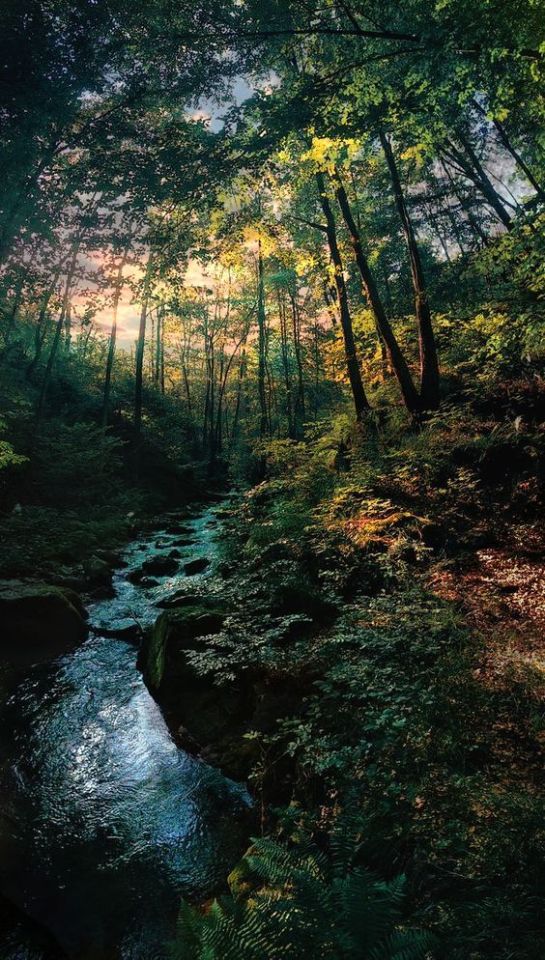
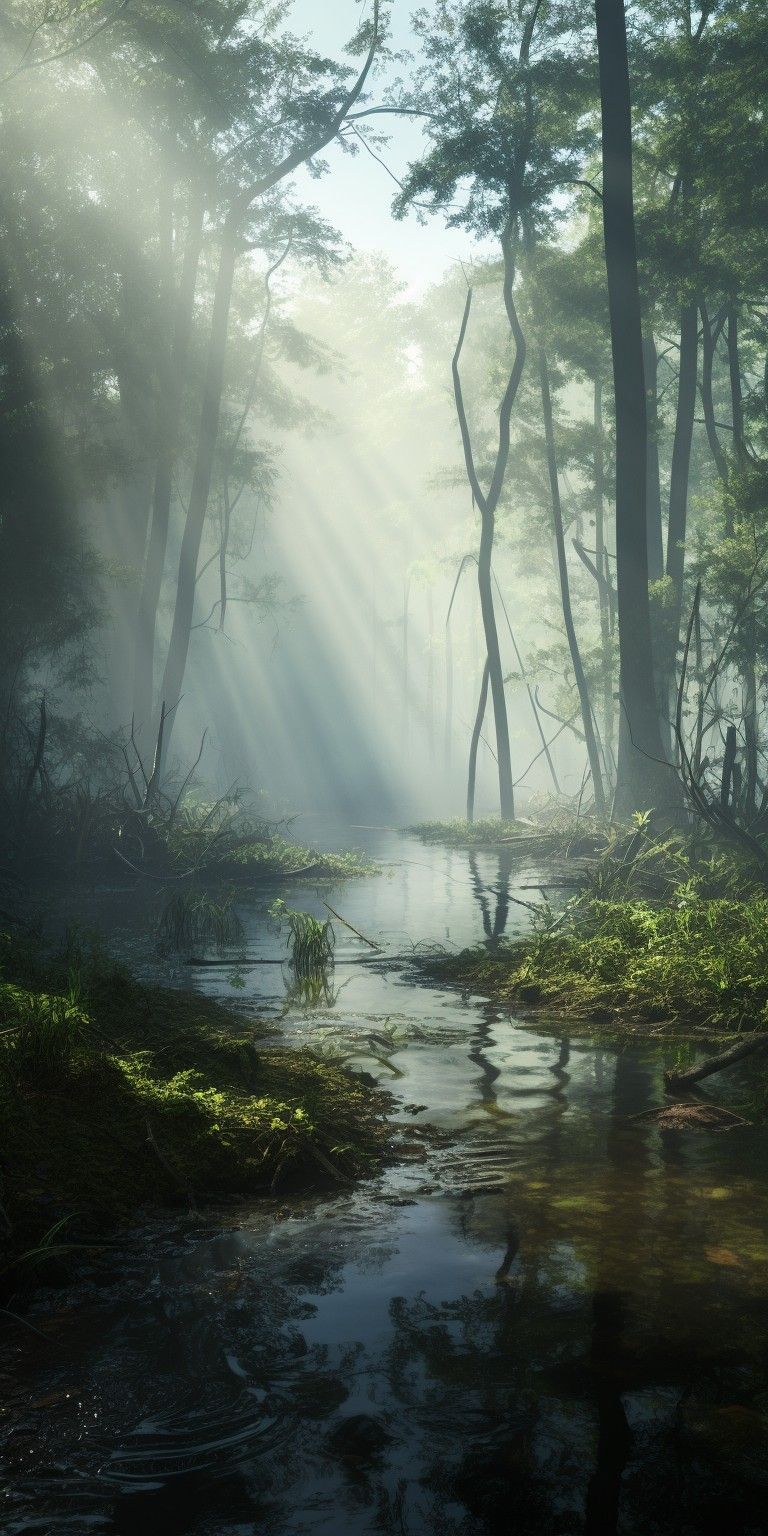






Источник::https://t.me/+fxNu20lM26MwYzhi,https://i.pinimg.com/564x/f7/a1/25/f7a12575fee62127bfec805ad3150097.jpg,https://ru.pinterest.com/pin/10625749113102409/,https://on-desktop.com/ru/priroda/les /66530-oboi-lesnoy-ruchey.html/16, //ru.pinterest.com/.
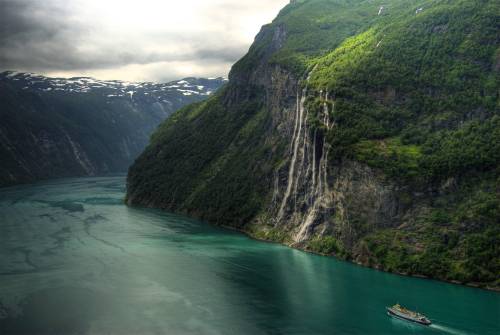

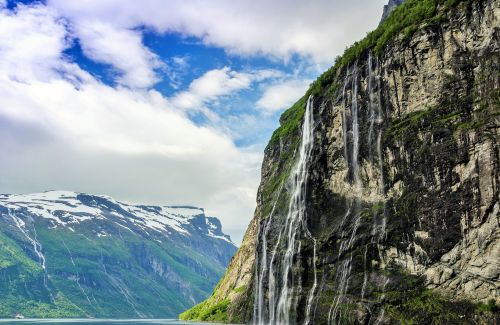
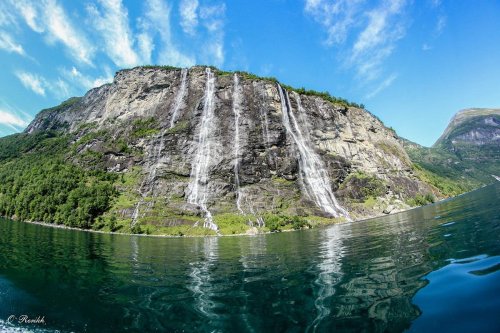
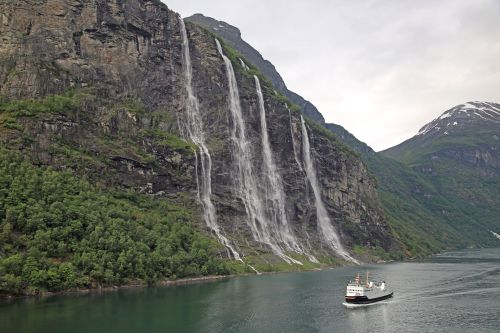
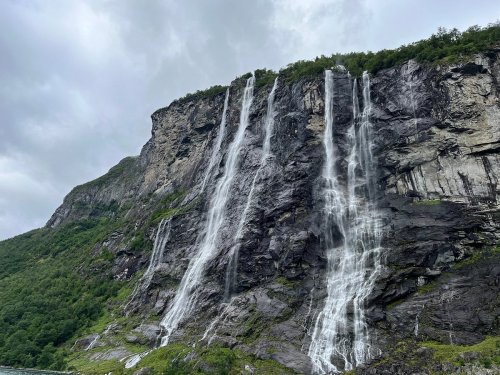

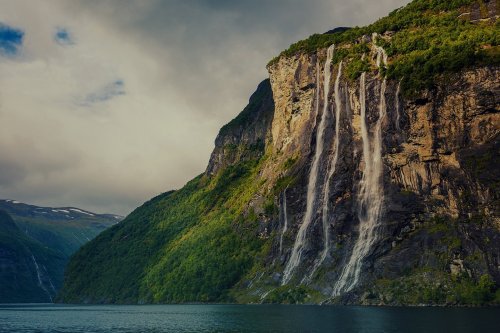


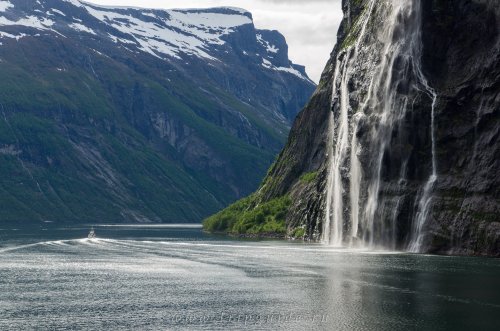
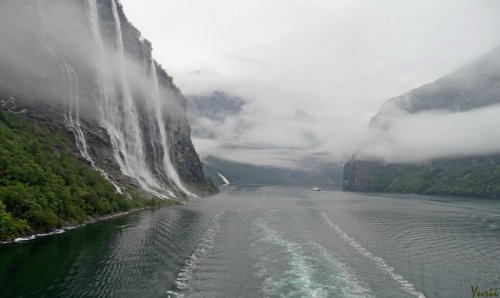
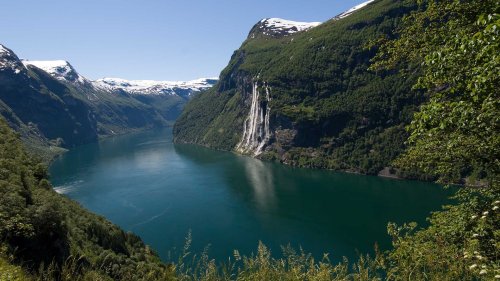

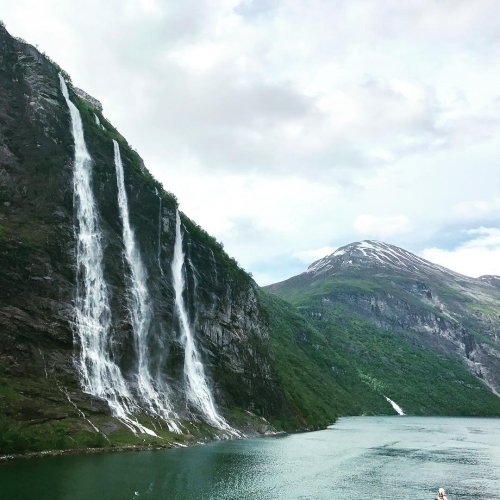
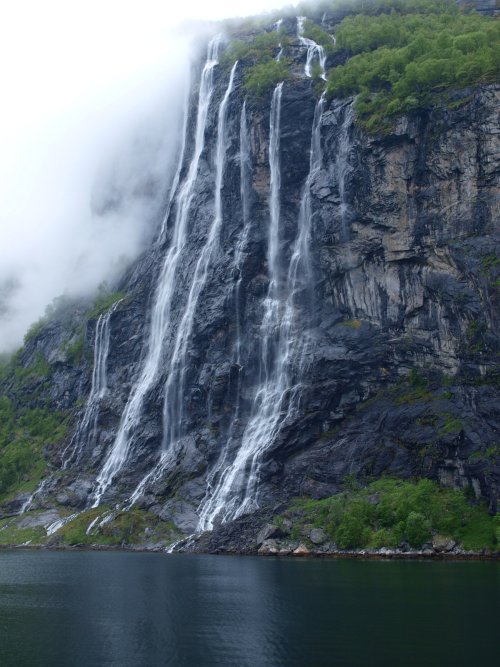

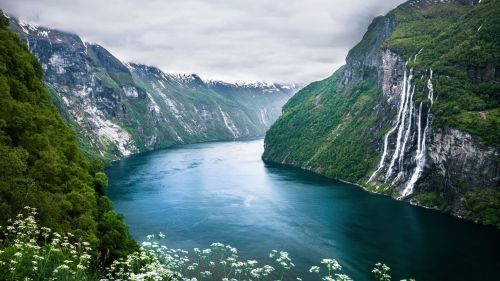
Знаменитый водопад «7 сестер» украшает левый берег Гейрангер-фьорда — живописного объекта наследия ЮНЕСКО. В период таяния снегов семь мощных потоков низвергаются с отвесной скалы и закрывают горные уступы, словно струящиеся девичьи локоны. Во время сильных дождей к основным струям добавляется несколько ручейков, а зимой вода замерзает и покрывает крутой берег извилистыми ледяными лентами.
В рейтинге самых высоких водопадов Норвегии «Семь сестер» занимает 59 строчку. «Старшая» сестра низвергается в залив с 410-метровой вершины, а все 7 потоков «встречаются» на высоте 250 метров и закрывают собой участок скалы шириной 223 метра. «Семь сестер» — хоть и не самый высокий, но, несомненно, один из самых красивых водопадов Норвегии. Фотографировать водопад лучше в мае—июне — когда потоки еще полноводны.
The famous waterfall "7 Sisters" adorns the left bank of Geiranger Fjord, a picturesque UNESCO heritage site. During the melting of the snows, seven powerful streams descend from a sheer cliff and cover the mountain ledges, like flowing girlish curls. During heavy rains, several streams are added to the main streams, and in winter the water freezes and covers the steep bank with winding ice ribbons.
Seven Sisters is ranked 59th in the ranking of the highest waterfalls in Norway. The "elder" sister plunges into the bay from a 410-meter peak, and all 7 streams "meet" at an altitude of 250 meters and cover a 223-meter-wide section of rock. "Seven Sisters" is not the highest, but undoubtedly one of the most beautiful waterfalls in Norway. It is better to photograph the waterfall in May—June — when the streams are still full.
Источник://t.me/bestplacesontheplanet,//www.tripadvisor.ru/Attraction_Review-g642196-d1755263-Reviews-Seven_Sisters-Geiranger_Stranda_More_og_Romsdal_Western_Norway.html, /www.tourister.ru/world/europe/norway/city/geiranger/waterfall/35257#gde-nahoditsya, ru.wallpaper.mob.org/pc/image/earth-seven_sisters_waterfall_norway-347833.html,://www.fotosselect.ru/10-amazing-places-to-see-in-your-lifetime/olympus-digital-camera/, /kotsport.ru/vodopad-sem-sester-norvegiya,/kartinki.pics/pics/15869-vodopad-sem-sester-norvegija.html.
Завораживающая красота косаток. The mesmerizing beauty of killer whales.

















Косатки являются самыми крупными представителями семейства дельфиновых. Порой косатки достигают длины в 10 метров и веса в 6-7 тонн. Зубы у косаток вырастают до 11-13 сантиметров в длину. Окраска косатки представлена двумя цветами, то есть черным и белым. Белым цветом у нее окрашено горло и живот, а черным – бока и спина. В северной части Тихого океана можно встретить косаток альбиносов и косаток меланистов (полностью черных), но это уже является следствием генетического отклонения.
Косатки являются хищниками высшего порядка, то есть никто из животных в дикой природе не охотятся на них. Они могут охотиться даже на крупных китов и акул. В сутки взрослой особи требуется 100-150 килограмм пищи. Иногда косаток называют «морскими волками», так как они предпочитают охотиться группами, как стаи волков. У косаток есть свой «язык», а особи из разных групп имеют свой диалект, если можно так назвать спектр звуков, которыми они обмениваются для общения. Косатки — животные социальные. Они предпочитают сосуществовать небольшими группами, связанными семейными узами. Иногда численность групп косаток может доходить до 40-50 особей.
Косатки обитают во всех океанах и в большинстве морей от экватора к полюсам, в разных по температуре водах. И придерживается диапазона в 800м. от берега. А еще косатки могут развивать скорость до 50 километров в час. При этом сердце косатки бьётся под водой вдвое реже, чем на поверхности. Средний период жизни этих удивительных созданий составляет от 50 до 60 лет.
Killer whales are the largest representatives of the dolphin family. Sometimes killer whales reach a length of 10 meters and a weight of 6-7 tons. The teeth of killer whales grow up to 11-13 centimeters in length. The color of the killer whale is represented by two colors, that is, black and white. Her throat and belly are painted white, and her sides and back are black. In the North Pacific Ocean you can find albino killer whales and melanistic (completely black) killer whales, but this is already a consequence of a genetic deviation.
Killer whales are apex predators, meaning they are not hunted by any animal in the wild. They can even hunt large whales and sharks. An adult requires 100-150 kilograms of food per day. Killer whales are sometimes called "sea wolves" because they prefer to hunt in groups, like packs of wolves. Killer whales have their own “language,” and individuals from different groups have their own dialect, if you can call it that, the range of sounds that they exchange to communicate. Killer whales are social animals. They prefer to coexist in small groups connected by family ties. Sometimes the number of killer whale groups can reach 40-50 individuals.
Killer whales live in all oceans and in most seas from the equator to the poles, in waters of different temperatures. And sticks to the 800m range. from the shore. Killer whales can also reach speeds of up to 50 kilometers per hour. At the same time, the killer whale’s heart beats half as often underwater as on the surface. The average lifespan of these amazing creatures is from 50 to 60 years.
Источник: https://t.me/+E4YBiErj0A8wOGUy, ://pichold.ru/zhivotnye/morskaya-kosatka-50-foto.html, /pichold.ru/zhivotnye/morskaya-kosatka-50-foto.html, /klike.net/10098-kartinki-kosatki-100-foto.html, dzen.ru/a/YdlVwOvfZmBLhOWs, lookw.net/animals/page,3,28-kasatki-i-kity-80-oboev.html.





















Наутилус (лат. Nautilus) — род головоногих моллюсков, которых относят к «живым ископаемым». Самый распространенный вид — Nautilus pompilius. Наутилусы относятся к единственному современному роду подкласса наутилоидей. Первые представители наутилоидей появились в кембрии, а его развитие пришлось на палеозой. Наутилиды почти вымерли на границе триаса и юры, но все же дожили до наших дней, в отличие от своих родственников аммонитов. Некоторые виды древних наутилусов достигали размера в 3,5 м. Представители самого крупного вида современных наутилусов достигают максимального размера в 25 см.
Спиральный «домик» моллюска состоит из 38 камер и «построен» по сложному математическому принципу (закон логарифмической прогрессии). Все камеры, кроме последней и самой большой, где размещается тело наутилуса с девятью десятками «ног», соединяются через отверстия между собой сифоном. Раковина наутилуса двухслойная: верхний (наружный) слой – фарфоровидный – действительно напоминает хрупкий фарфор, а внутренний, с перламутровым блеском – перламутровый. «Домик» наутилуса растет вместе с хозяином, который перемещается по мере роста раковины в камеру попросторней. Пустое жилище моллюска после его гибели можно встретить далеко от его места обитания – после гибели «хозяина» их раковины остаются на плаву и перемещаются по воле волн, ветров и течений.
Интересно, что двигается наутилус «в слепую», задом наперед, не видя и не представляя препятствий, которые могут оказаться на его пути.И еще одно удивительное качество этих древних обитателей Земли – у них потрясающая регенерация: буквально через несколько часов раны на их телах затягиваются, а в случае потери щупальца быстро отрастает новое.
Nautilus is a genus of cephalopods, which are classified as "living fossils". The most common species is Nautilus pompilius. Nautilus belong to the only modern genus of the Nautiloid subclass. The first representatives of the Nautiloids appeared in the Cambrian, and its development took place during the Paleozoic. The Nautilids almost died out on the border of the Triassic and Jurassic, but still survived to the present day, unlike their Ammonite relatives. Some species of ancient Nautilus reached a size of 3.5 m. Representatives of the largest species of modern nautilus reach a maximum size of 25 cm.
The spiral "house" of the mollusk consists of 38 chambers and is "built" according to a complex mathematical principle (the law of logarithmic progression). All chambers, except the last and largest, where the nautilus body with nine dozen "legs" is located, are connected through holes with a siphon. The nautilus shell is two–layered: the upper (outer) layer – porcelain–like - really resembles fragile porcelain, and the inner, with a mother-of-pearl luster - mother-of-pearl. The nautilus's "house" grows with its owner, who moves as the shell grows into a larger chamber. The empty dwelling of a mollusk after its death can be found far from its habitat – after the death of the "owner", their shells remain afloat and move at the will of waves, winds and currents.
Interestingly, the Nautilus moves "blindly", backwards, without seeing or imagining the obstacles that may be in its path.And another amazing quality of these ancient inhabitants of the Earth is that they have amazing regeneration: in just a few hours, the wounds on their bodies heal, and in case of loss of tentacles, a new one grows quickly.
Источник:://t.me/+t0G9OYaBjn9kNTBi, /sevaquarium.ru/nautilus/, /habr.com/ru/articles/369547/, //wallpapers.com/nautilus, poknok.art/6613-nautilus-molljusk.html, //wildfauna.ru/nautilus-pompilius, /www.artfile.ru/i.php?i=536090.



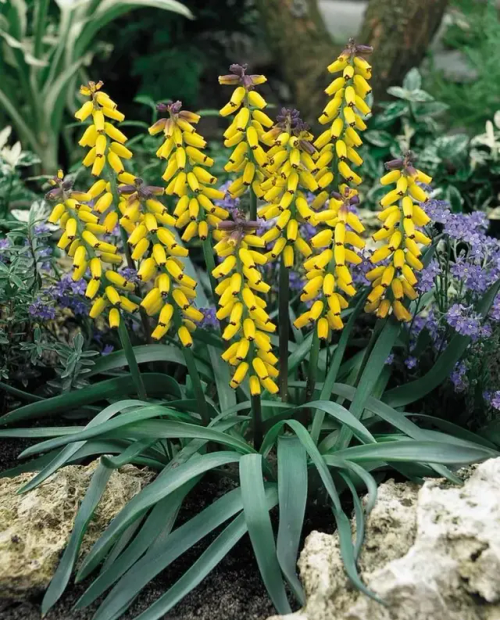

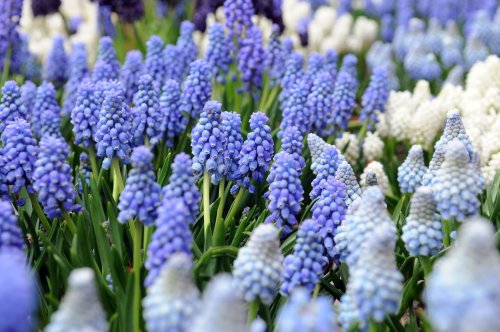
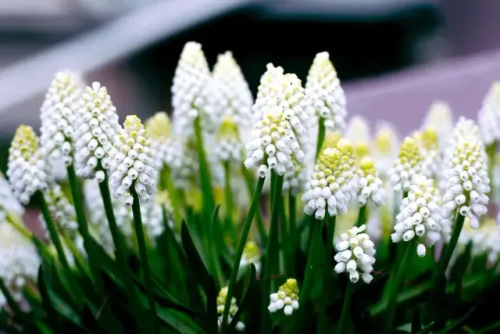











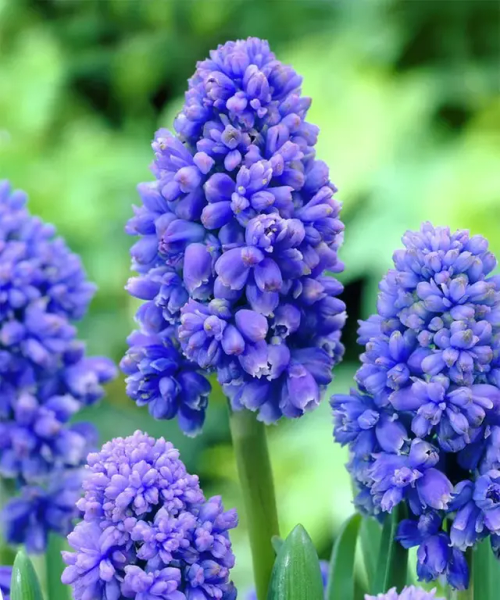







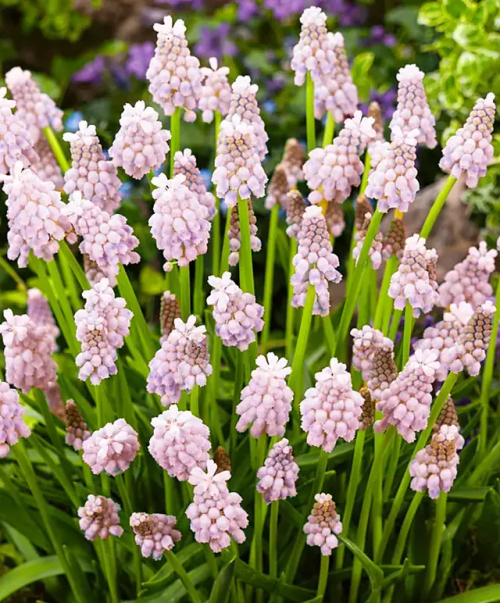
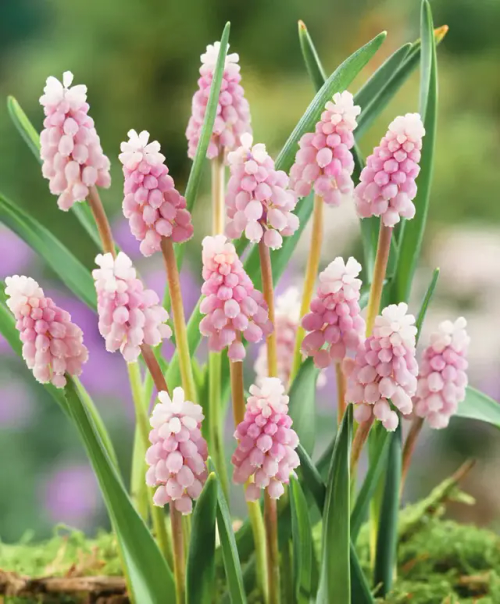


Разнообразие цветущих Мускари, которые еще именуют мышиным гиацинтом либо гадючим луком. A variety of flowering Muscari, which is also called mouse hyacinth or viper onion.
Источник://www.novochag.ru/dacha-and-garden/gardening/luchshie-sorta-muskari-originalnye-stilnye-i-neprihotlivye/,//7dach.ru/Korifey/15-moih-samyh-lyubimyh-sortov-muskari-69026.html, ://colodu.club/38259-muskari-v-landshaftnom-dizajne.html, //wallbox.ru/tag/мускари,/kartin.papik.pro/cveti/3964-kartinki-cvety-muskariki-70-foto.html,/dzen.ru/a/ZEg0gcqvKFB887Dv